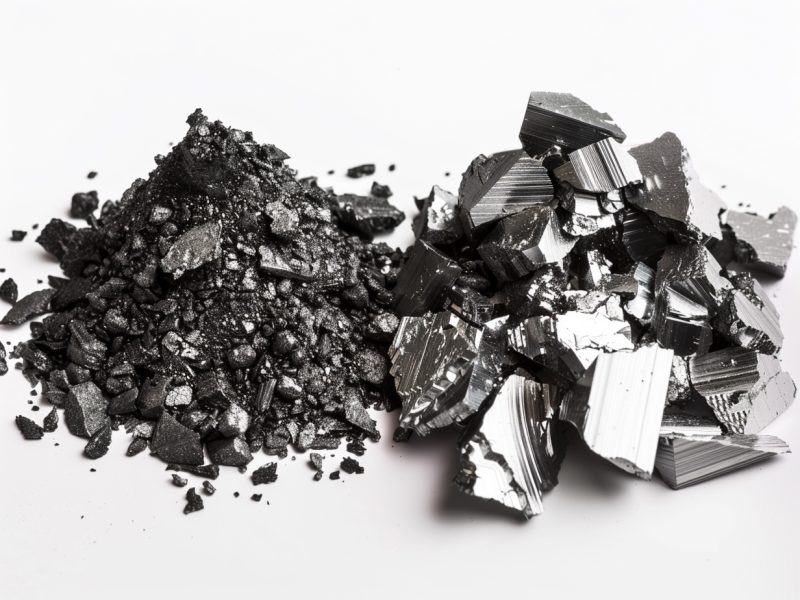
Scandium and terbium are both elements that belong to the broader category of rare earth elements. While they share some similarities due to their placement in the periodic table, they possess distinct characteristics and applications that set them apart. This comparative analysis will talk about the properties, uses, and significance of scandium and terbium.
Overview of Scandium
Scandium is a transition metal with the atomic number 21 and the symbol Sc. It is often classified as a rare earth element due to its occurrence in rare earth minerals, although it is technically a transition metal. Here are some key points about scandium:
- Physical Properties: Scandium is a silvery-white metal that is relatively soft. It is lightweight and has a high melting point of 1541°C.
- Chemical Properties: Scandium typically exhibits an oxidation state of +3. It forms a protective oxide layer when exposed to air, which prevents further oxidation.
- Occurrence: Scandium is not abundant in the Earth’s crust, making it relatively rare. It is found in small quantities in minerals such as thortveitite, euxenite, and gadolinite.
Applications of Scandium
Scandium’s unique properties make it valuable in several niche applications:
- Aerospace Industry: Scandium is used in aluminum-scandium alloys to enhance the strength, corrosion resistance, and weldability of aluminum. These alloys are used in aerospace components and high-performance sports equipment.
- Lighting: Scandium iodide is used in metal halide lamps, which produce high-intensity light with a color spectrum similar to natural sunlight. These lamps are used in stadiums and for film and television lighting.
- Fuel Cells: Scandium is used in solid oxide fuel cells (SOFCs) to improve the efficiency and durability of the electrolyte material.
Overview of Terbium
Terbium is a lanthanide with the atomic number 65 and the symbol Tb. It is a member of the rare earth element group and is known for its luminescent properties. Key points about terbium include:
- Physical Properties: Terbium is a silvery-gray metal that is relatively stable in air. It has a melting point of 1356°C.
- Chemical Properties: Terbium typically exhibits an oxidation state of +3. It forms terbium oxide (Tb₂O₃) when exposed to air, which is a greenish compound.
- Occurrence: Terbium is also relatively rare and is usually extracted from minerals such as monazite and bastnäsite.
Applications of Terbium
Terbium’s luminescent properties make it valuable in various high-tech applications:
- Phosphors: Terbium is used in green phosphors for color television tubes, computer screens, and LED displays. The 5D₄ → 7F₅ transition in Tb³⁺ ions emits green light.
- Magnets: Terbium is used in terbium-iron-cobalt (TbFeCo) alloys for high-performance magnets in various applications, including data storage and electric motors.
- Lasers: Terbium-doped materials are used in certain types of lasers, where they enhance the laser’s performance.
Comparative Analysis
While both scandium and terbium are rare earth elements, they differ significantly in their properties and applications:
- Position in the Periodic Table:
- Scandium is a transition metal and is placed in Group 3 of the periodic table.
- Terbium is a lanthanide and is placed in the f-block of the periodic table.
- Physical and Chemical Properties:
- Scandium is lightweight and primarily used in structural applications due to its alloying properties.
- Terbium is known for its luminescent properties and is used in electronic and optical applications.
- Applications:
- Scandium is mainly used in aerospace alloys, lighting, and fuel cells.
- Terbium is primarily used in phosphors, magnets, and lasers.
- Abundance and Extraction:
- Both elements are relatively rare, but their sources and extraction methods differ. Scandium is extracted from minerals like thortveitite, while terbium is extracted from monazite and bastnäsite.
- Economic Value:
- The economic value of scandium is driven by its use in high-performance alloys and emerging technologies like fuel cells.
- Terbium’s value is driven by its critical role in green phosphors for displays and high-performance magnets.
Conclusion
While scandium and terbium may both belong to the category of rare earth elements, their distinct properties and applications set them apart. Scandium’s lightweight and high-strength alloys make it indispensable in aerospace and high-performance applications, whereas terbium’s luminescent and magnetic properties make it critical for display technologies, lasers, and data storage solutions. Understanding the unique characteristics of each element allows for more targeted and effective utilization in their respective fields.
